All about planters for a walk-behind tractor
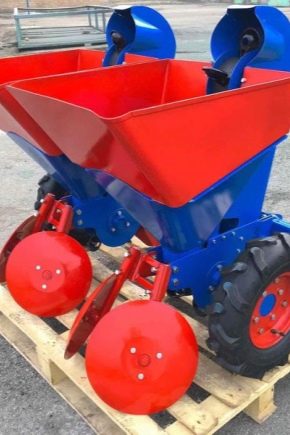
With the onset of spring for the owners of summer cottages, the most hectic time comes - sowing. This is a rather laborious activity, but agricultural technology does not stand still and constantly releases new products in the agricultural industry, which can significantly make life easier for gardeners and gardeners. One of these developments was a seeder for walk-behind tractors.
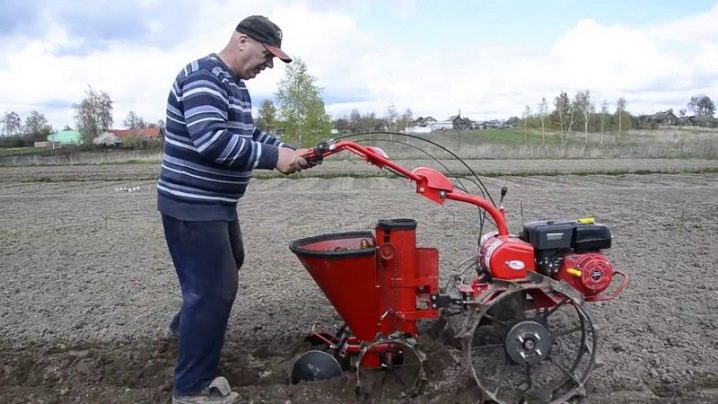
Description
In large state farms and agricultural enterprises, sowing has long been carried out with the help of special equipment, but our summer residents for many years had to loosen the land, form furrows and scatter seeds by hand. Of course, if you are the owner of three beds, then such work will not be difficult, but if you have a plot of 6 or more acres, it makes sense to "entrust" part of your work to little assistants - seeders for walk-behind tractors.
These powered attachments are multifunctional multi-shed implements. Thanks to the use of a seeder, almost all sowing operations are significantly accelerated, while their quality meets all agrotechnical standards, and very little energy, like fuel, is consumed. Such equipment is designed for clutching with medium and heavy motoblocks, the performance parameters of which are 6 or more horsepower.
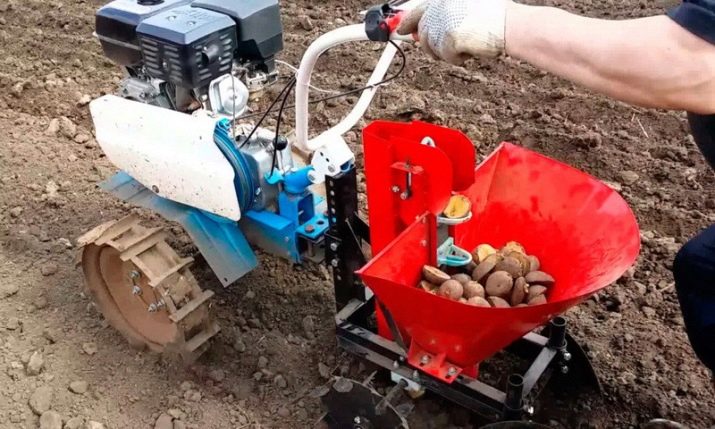

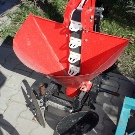
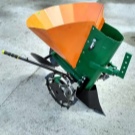
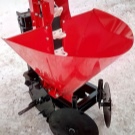
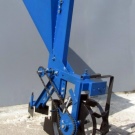
Principle of operation
Each seeding equipment includes the following building blocks:
- container for storing seeds;
- a sowing device that allows you to evenly feed seeds and seed tube;
- directly the seed tube for moving the flow of planting material to the openers;
- openers responsible for pressing the furrow to the ground;
- devices for filling grooves with a layer of soil and leveling the surface of the site.
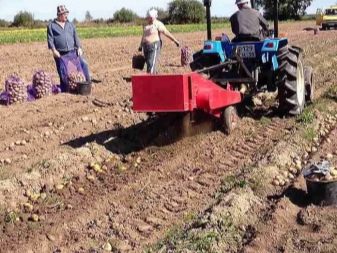
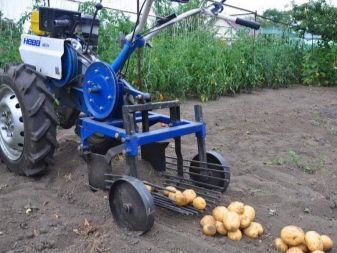
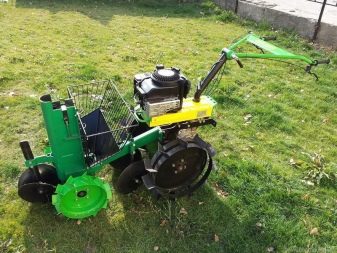
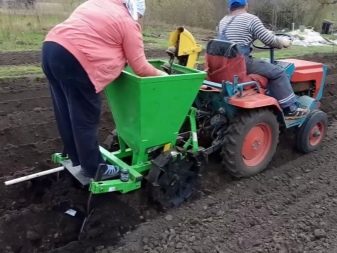
The principle of operation of such devices is quite simple and looks like this:
- the planter moves along the area intended for planting seeds and forms small grooves in it;
- sows seeds in them so that a given distance is maintained between them, and the planting depth feels standard;
- fills up soil grooves and smoothes the surface.

Important! The use of such a nozzle for motoblocks helps to minimize the time spent on all work, and also protects the farmer from overwork.
If you dig deeper into the technical nuances of planting seeds using a seeder, then the mechanism is standard here - one of the structural elements of the device is a chain drive, as well as a rear wheel, which work as a whole. The gear sets the direction of movement of the wheel, as a result, the seeds fall into the ground through special holes. Modern models of planters allow you to adjust the planting speed, as well as the size of the planting material (seeds or bulbs), thanks to this feature, the farmer gets the opportunity to change the number of plantings in one go. Different planter models also allow for intelligent control of the planting depth, which usually ranges from a few millimeters to several centimeters.

Important! If you want to plant small seeds such as carrots, a variety of fillers should be used. Bran is best suited for this purpose, but sand, even river sand, is not recommended, since it can harm fragile seed.
Features of homemade planters
Many summer residents who have at least minimal metalworking skills prefer to make seeders on their own in their home workshop.
To do this, you will need the following materials and elements:
- a pair of running wheels;
- wooden box for planting material;
- hardware;
- steel sheets;
- rubberized layers;
- growing roller;
- steel corners and spikes;
- bearings;
- bracket.
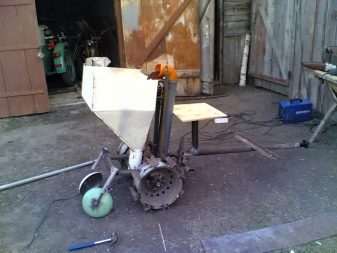
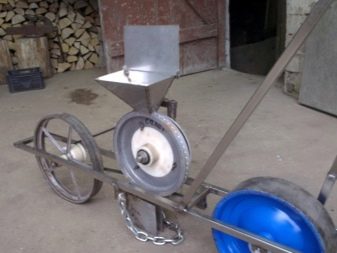
The process of making a planter is quite simple, but it requires maximum concentration and concentration of attention, that is why here you should focus on the following nuances of work:
- the seed box is made only of wood, and the thickness of the boards should not exceed 15 mm, but for their shelter, you can use overhead bottoms made of steel with a thickness of 1 mm;
- it is better to connect the walls of the structure with iron corners, as well as spikes and self-tapping screws;
- wood lining is attached to the bottom wall of the box;
- the seeding roller fastening mechanism is necessarily combined with the formation of semicircular cutouts, usually brackets are attached to the linings with screws;
- rubber plates are placed in the bottoms, which contribute to the most complete removal of seeds into the ground;
- the openers can be made from sheet steel and then hooked on with brackets.
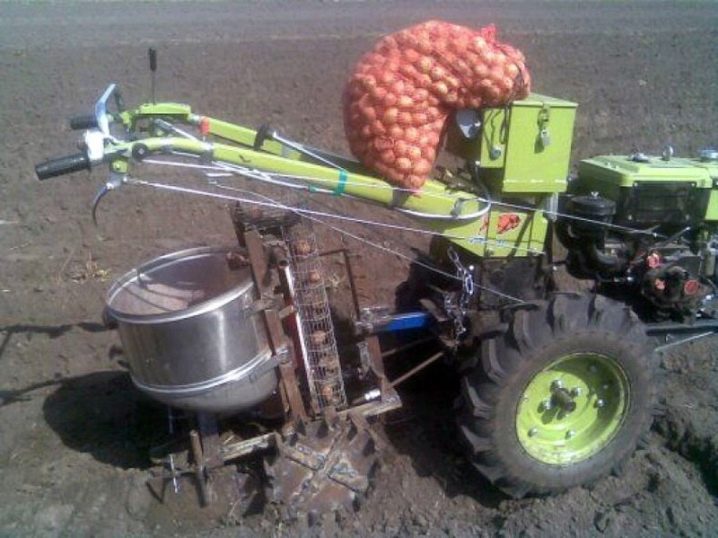
Important! The planting depth of the seed is adjusted by means of the secondary attachment of the opener in small holes.
Views
Planters for walk-behind tractors can be classified on several grounds, which are worth dwelling on in more detail. According to the method of introducing planting material, planters can be as follows:
- privates - when using them, the seeds are planted in rows located at a certain distance from each other, while the seeds, as well as the grooves, are immediately thrown over with soil and leveled;
- nesting - required in order to scatter groups of seeds in small rows; in essence, nested seeders resemble ordinary ones, only ordinary ones assume single planting of seeds, and nest planters plant them in small groups in pre-created holes;
- square-nested - are used to grow planting material in a given order, as if at the corners of a square or rectangle; the disadvantage of such installations is the low landing speed;
- dotted - allow for wide-row planting, while the seeds are placed at some distance from each other;
- scattering - optimal for such types of sowing when the seeds need to be evenly scattered over the ground, by the way, such seeders can be used in winter - they are useful for scattering sand on slippery garden paths; such devices are of very high quality and high-performance, the only limitation of the use of such a device is the inexpediency of using along the edges of the site, since in this case part of the family material will simply fly away from the allotted allotment.
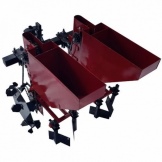
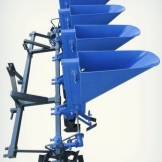
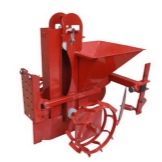
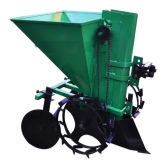
By type of seed, they can be as follows:
- universal - work with vegetables and grain crops, they can adapt to seeds of any size thanks to a special built-in calibrator;
- specialized - used for crops of a certain type: herbs, bulbs, vegetables, cereals and other types of seeds, more often than others there are a garlic planter and a potato planter.
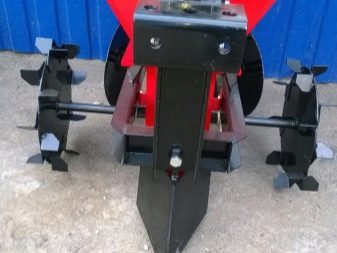
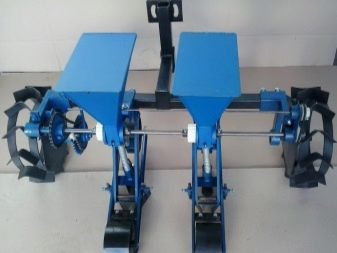
For planting grain, in most cases I use dotted seeders with 5–9 rows and a capacity of 6–15 liters. with. The distance between the holes is set at 20–30 cm, and the planting depth is set at the level of 7–10 cm. For growing corn, ordinary and square-nested models are often used, which provide the necessary accuracy of seed placement. Herbal ones belong to the ejection mechanisms, it is especially good to plant seeds with their help. But for garlic, a nest planter is recommended, although a dotted planter can also be used, the same applies to onions.Vegetable seeders are truly versatile mechanisms that can plant seeds of various sizes, they are equipped with calibrators, so you can adjust the size of the outlet, for example, a carrot has a small hole, and a potato one is quite large.
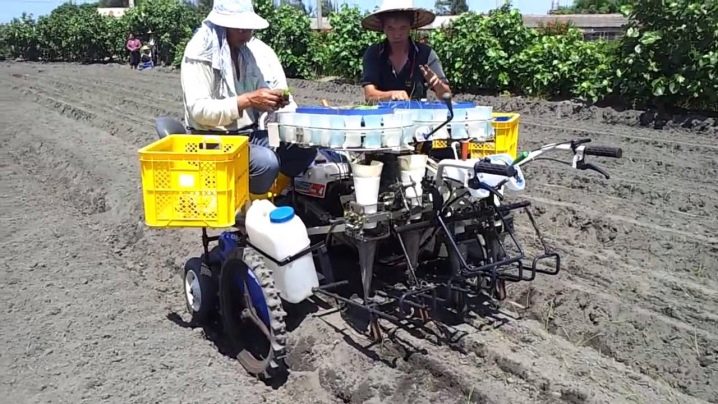
Depending on the method of use, planters can operate in modes such as:
- in conjunction with the adapter - for unenclosed areas of 10 hectare or more;
- without adapter - for small fenced land;
- hand-drawn equipment - it is recommended for greenhouses and greenhouses.
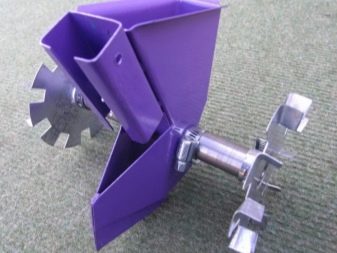
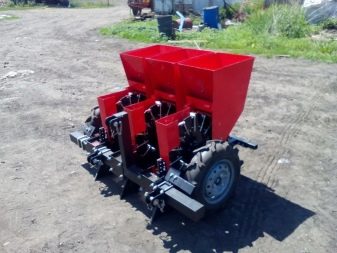
Top Models
Among all the abundance of agricultural machinery presented, users invariably give preference to products of well-known brands that have long won consumer recognition for their high quality, reliability and durability. Among the most popular models, it is worth highlighting the products of such companies as "Centaur", "Krasnaya Zvezd", "Belinskselmash", as well as Bozkurt and Becker. It is worth taking a closer look at the most popular models according to the users' version.
- SVTV 4-8. This is a vacuum seeder. Its travel speed is 23.5 km / h. The number of revolutions of the seeding drum is 21 rpm. The seed size can vary from 1 to 10 mm. The maximum distance between seeds is 70 cm, while the planting depth can be up to 10 cm.

- Premium STV-2. This seeder is optimal for planting seeds of garlic, corn, potato planting material, as well as other vegetable crops of various fractions. The machine simultaneously cuts furrows, introduces planting material and compacts the beds. The planter is optimal for motoblocks with a capacity of 6 liters. with. The width of the wheels is 110 mm, the row spacing is at the level of 16-50 cm, the seeds are planted to a depth of 1 to 6 cm.
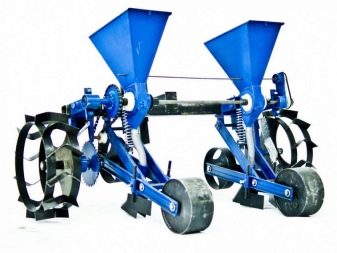
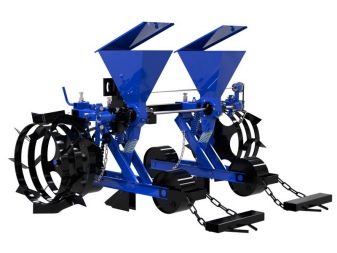
- STV-4. It is a dotted seeder designed for planting crops and vegetables. The model is equipped with several replaceable drums, so that you can plant material of a wide variety of fractions. During the operation of the device, a furrow is simultaneously formed, seeds are sealed, the soil is compacted.

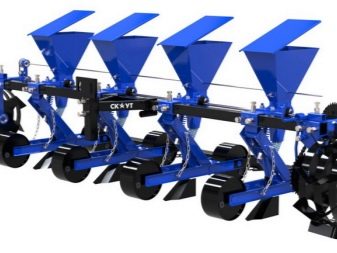
- SM-6. This model is intended for the row planting of small material. It is most often used in greenhouse farms, as well as in small house plots. It allows for uniform planting in six rows of vegetables, grains and lawns. When sowing seeds of the finest fraction, it is recommended to pre-mix them with any available filler.
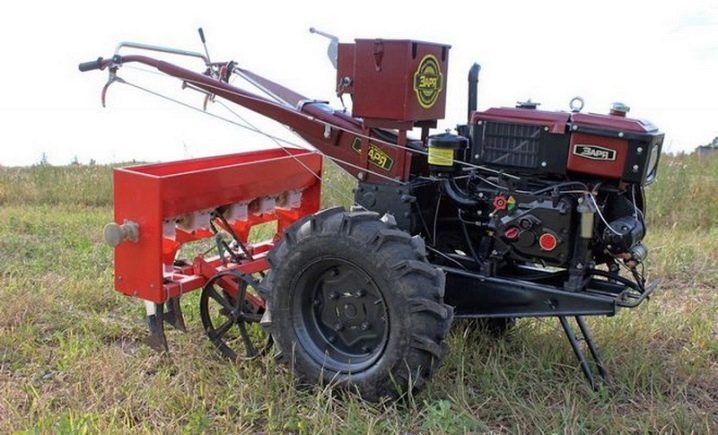
Selection Tips
To choose the right planter, there are several basic factors to take into account.
- The size. Typically, seeders have 6 to 48 rows. The choice here depends only on the size of the site, it is obvious that the larger the number of rows, the higher the speed of work, respectively, the more work you have to do, the more overall the planter should be.
- Row spacing. If you purchase a seeder for planting several types of crops, then it is better to give preference to models that have the ability to set the required distance between rows. If you plan to cultivate only one type of plant, for example, potatoes, for several years, then this additional function can be completely dispensed with.
- Seed feed. Everything is the same here. If you intend to plant the same seeds from year to year - purchase a model with a batch feeding of material. If you need to load seeds of different vegetables and cereals into the device, then it is better to purchase a model equipped with interchangeable hoppers.
- Pay attention to the system of redistribution of seed weightSince most of them are fed to the ground through the seed tubes, an increase in density in the central part can lead to an overall decrease in yield. It is advisable to choose more modern models equipped with flotation tires.
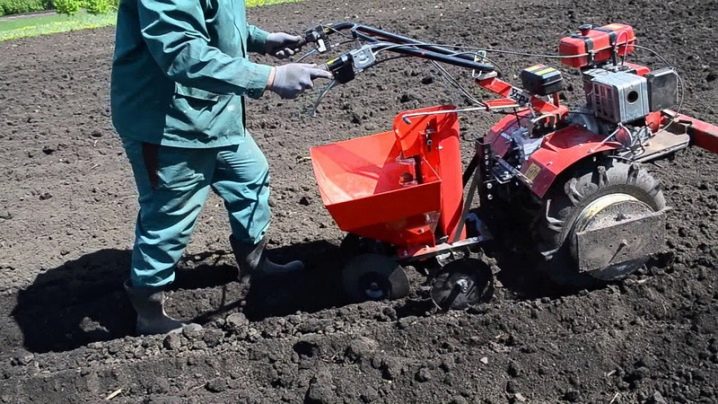
- Sowing unit must be of the highest quality. Its dispenser must guarantee correct and accurate fit. Optimally, if it will be complemented by the ability to calibrate landings.
- Downforce. This is an important indicator that indicates how hard the coulters are sinking into the ground. This directly affects the quality of planting and the depth of seeding, therefore, special attention should be paid to this parameter.
- Embedding system. And finally, one of the most important parameters of plant reliability is the planting material embedding system. If the product is of high quality, then the system must carefully align the grooves in such a way that even traces of them will not remain. Experts recommend giving preference to modifications with the possibility of reconfiguring for different conditions of sown land.
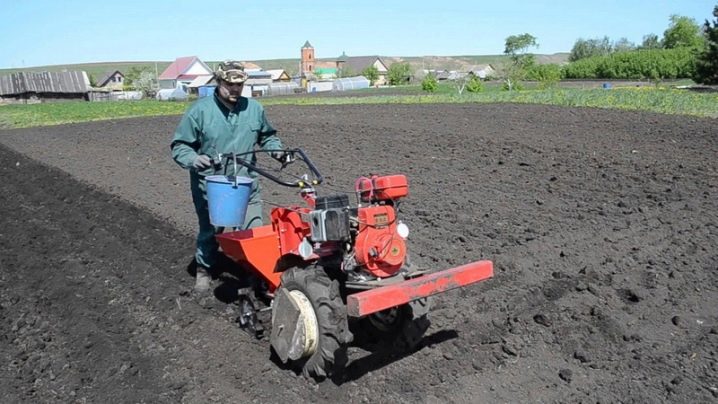
Before buying a planter, you should take into account that planters for certain types of horticultural crops are quite similar to each other. For example, a beet planter can be used to plant any material with a diameter of less than 7 mm, such as cabbage. When replacing the nozzle, a garlic seeder may well be used for onions and vice versa.
Exploitation
In conclusion, it is worth considering the features of using a planter for walk-behind tractors. The main thing is to understand that a seeder is not only a convenient device for spreading seeds, it is, first of all, a good equipment for soil cultivation. Modern models with improved technology allow effective tillage of the land, so that it does not deplete even with prolonged use, and the fertility remains at a high level.
In order for the seeder to serve you for many years, you should follow such simple recommendations as:
- you should not purchase a universal seeder without an adjustable valve - otherwise the seeds will be unevenly or too quickly spill out into the ground or simply tightened;
- if you use homemade mounted seeders for walk-behind tractors, then make it a rule to regularly check their condition; periodic installation will minimize the occurrence of emergency situations and equipment breakdowns;
- when sowing the land, you can use various additional fillers, for example, humus, remnants of old grains or spoiled cereals; such additives enrich the earth with useful substances and provide young sprouts and roots with adequate nutrition, creating the conditions necessary for obtaining a high yield.
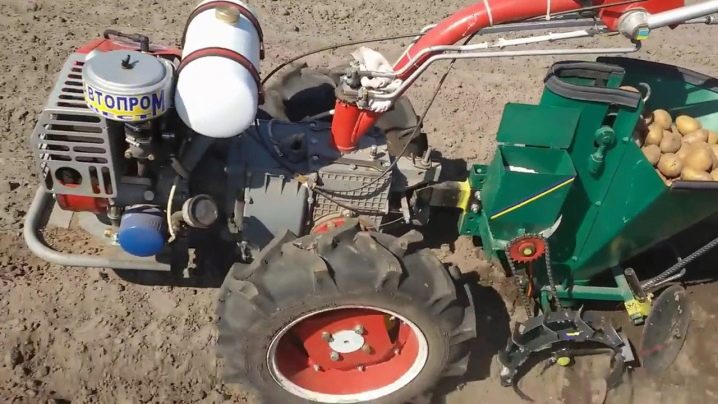
For information on how to choose a planter for a walk-behind tractor, see the next video.



































































The comment was sent successfully.